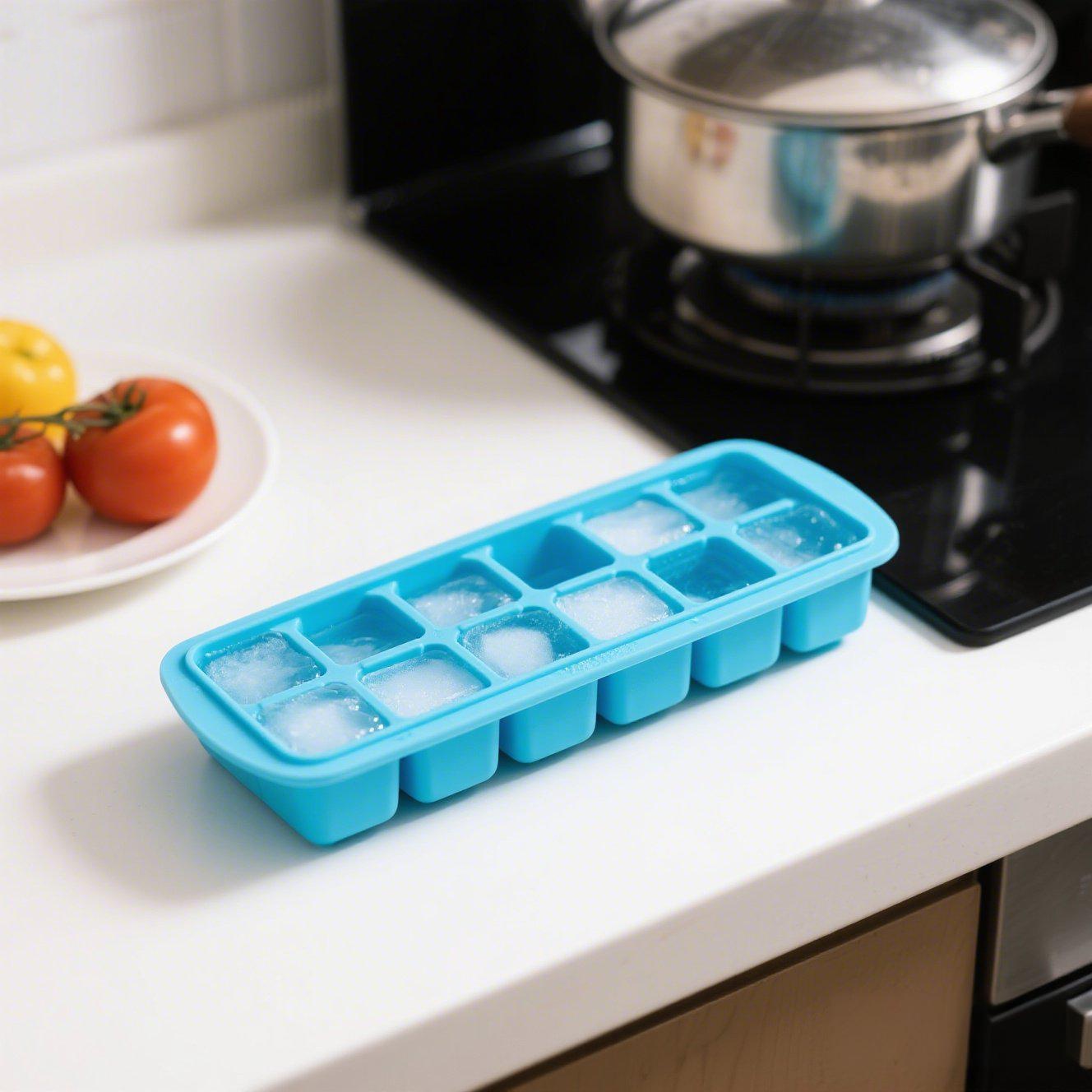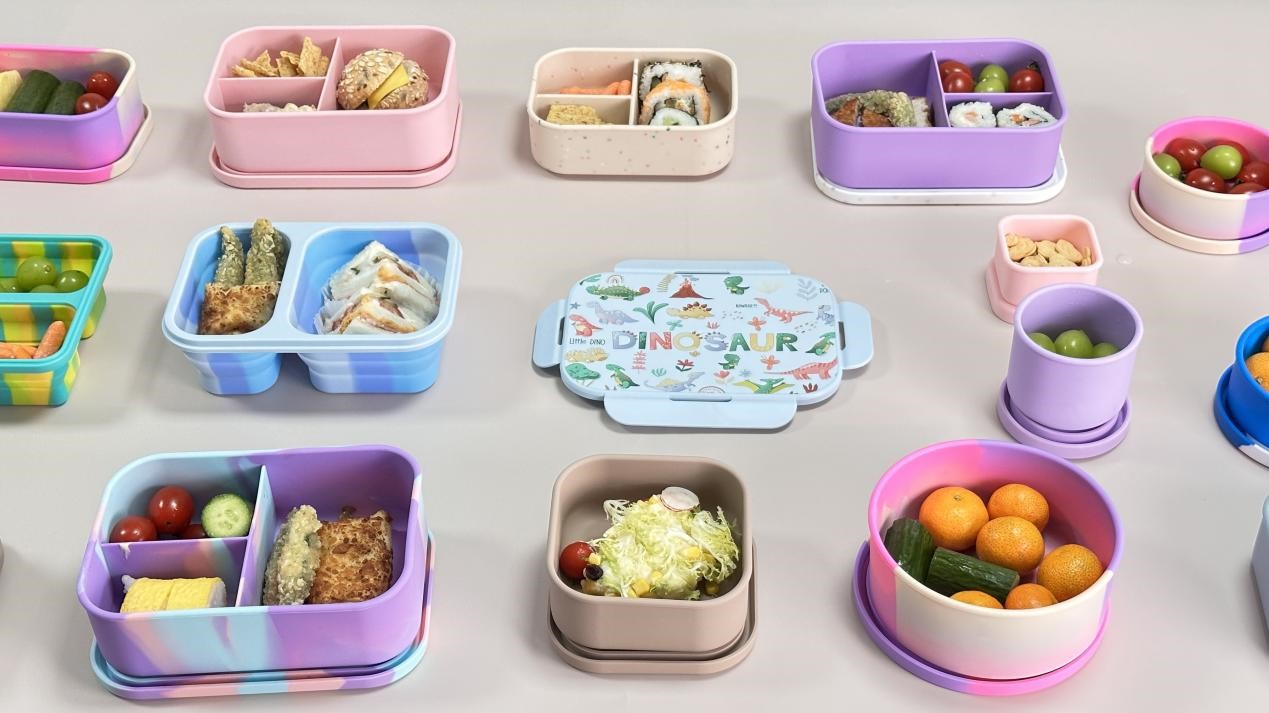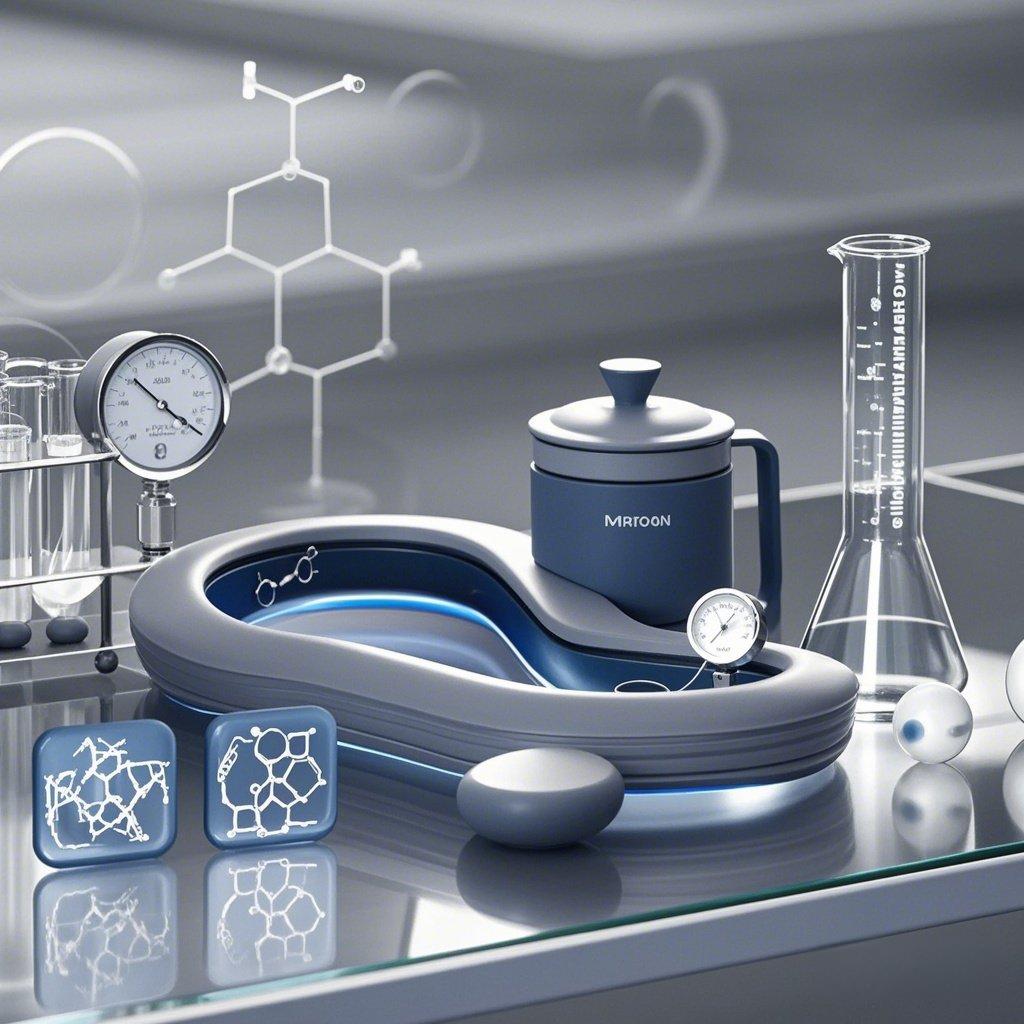Z przyjemnością przedstawiamy silikonowe pudełka na lunch, pokazując, jak mogą one zmienić czas lunchu dzieci z nudnego w zabawny.
Atrakcje silikonowego pudełka bento
1. Bezpieczeństwo i trwałość
Silikonowe pojemniki na lunch wyróżniają się jakością spożywczą, zapewniając, że są nietoksyczne i wolne od BPA, dzięki czemu są bezpieczne dla żywności dziecka. Jego wyjątkowa trwałość pozwala mu wytrzymać codzienne użytkowanie, podgrzewanie w kuchence mikrofalowej i czyszczenie w zmywarce, co czyni go trwałym wyborem dla zapracowanych rodzin.
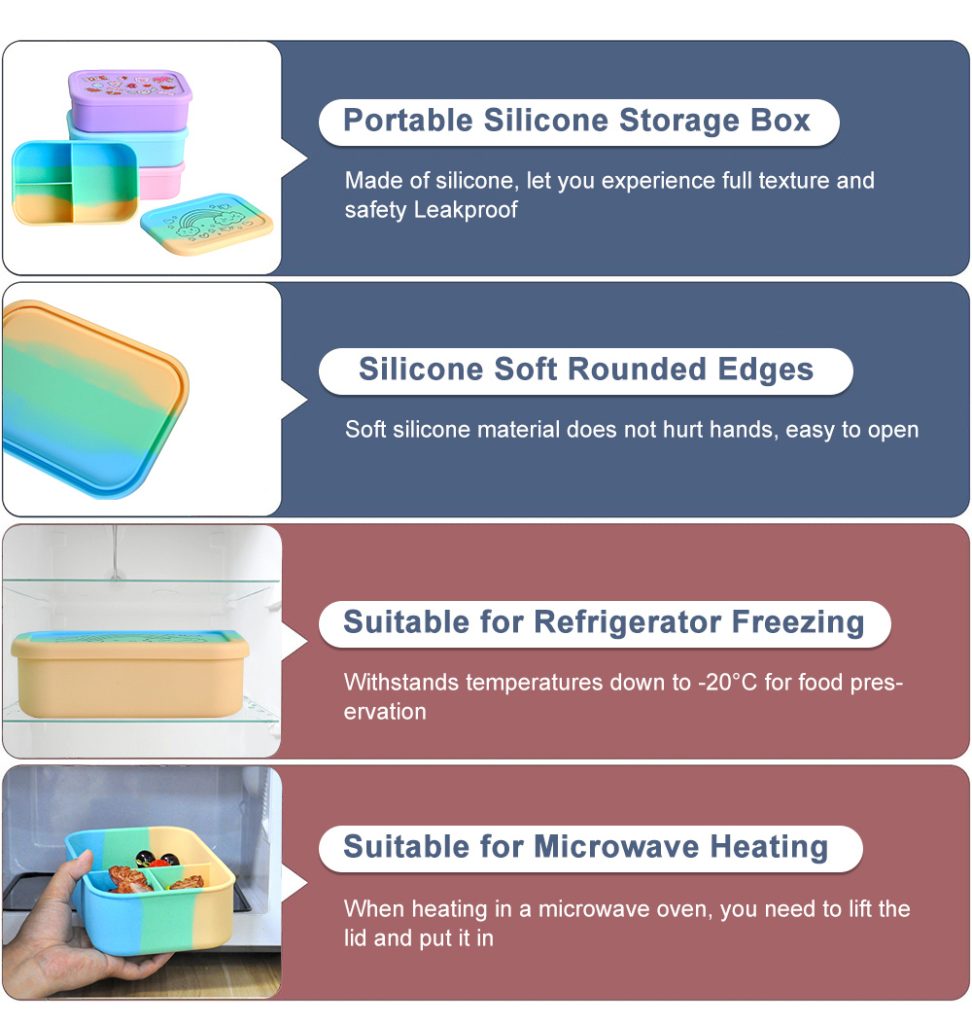

2. Wybór przyjazny dla środowiska
Wraz z rosnącym naciskiem na ograniczenie jednorazowych tworzyw sztucznych, silikonowe pudełka bento stanowią przyjazną dla środowiska alternatywę. Ich charakter wielokrotnego użytku znacznie zmniejsza ilość odpadów, a trwałość zapewnia niższy ślad węglowy w porównaniu z opcjami jednorazowymi. Podkreśl to, aby przemówić do świadomych ekologicznie konsumentów, którzy cenią zrównoważone produkty.
Silikonowe pudełka bento na kreatywne chwile z jedzeniem
1. Artystyczny Eekspresja w Bento Dprojekt
Pudełka bento dla dzieci mają zwykle wiele popularnych kolorów i wzorów, takich jak różne obrazy z kreskówek, słodkie zwierzęta, żywe motywy sezonowe lub radosne motywy świąteczne, dzięki czemu lunch staje się żywy i interesujący.
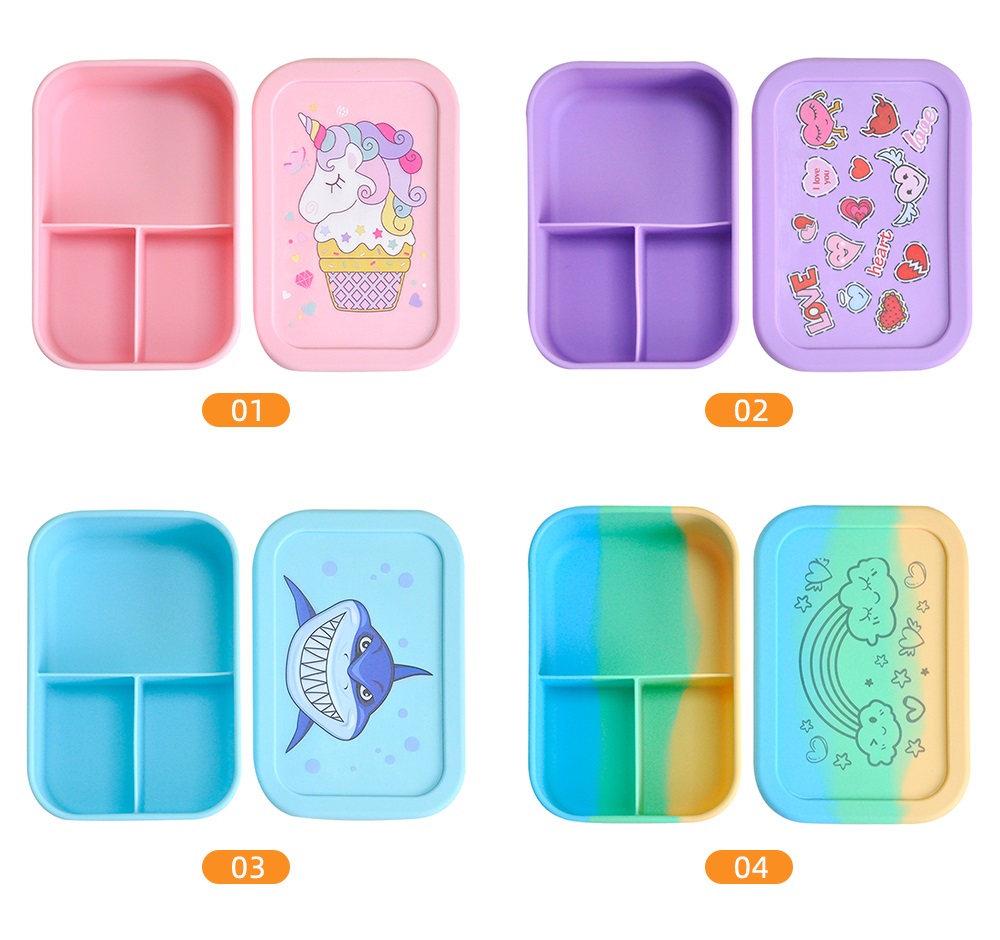

2、Wspólne dopasowanie przepisów dla pudełek bento
Poniżej znajduje się seria pożywnych i przyjaznych dzieciom przepisów zaprojektowanych specjalnie dla silikonowych pudełek na lunch. Obejmuje następujący asortyment opcji:
- *Protein Treasure*: mini tarty, burrito z indyka, gwiazdki z tofu.
- Warzywna przygoda*: Kwiat Marchewki, Gąsienica Ogórka, Bukiet Pomidorów Wiśniowych.
- *Fruit Fantasy*: szaszłyki owocowe, kulki z melona spadziowego, serduszka truskawkowe maczane w jogurcie.
- *Niezbędne produkty zbożowe*: Kanapka pełnoziarnista, kulki ryżowe, sałatka makaronowa.
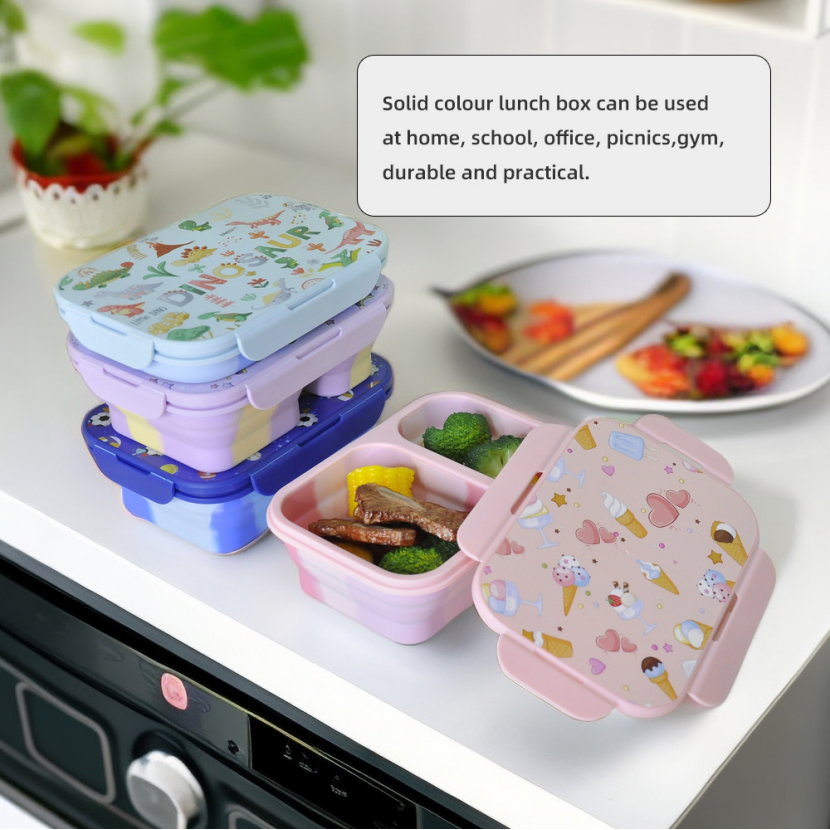

Każdy przepis jest zbilansowany pod względem odżywczym i łatwy do dostosowania do różnych potrzeb dietetycznych (np. bezglutenowych, bezlaktozowych).
Praktyczne zalety i wskazówki dotyczące użytkowania
1. Łatwe oddzielanie żywności
Podzielona konstrukcja silikonowego pudełka Bento Box pomaga rodzicom promować zbilansowaną dietę poprzez rozdzielanie różnych produktów spożywczych na odpowiednie porcje. Umożliwia również dzieciom próbowanie nowych potraw i rozwijanie zdrowych nawyków żywieniowych w młodym wieku.
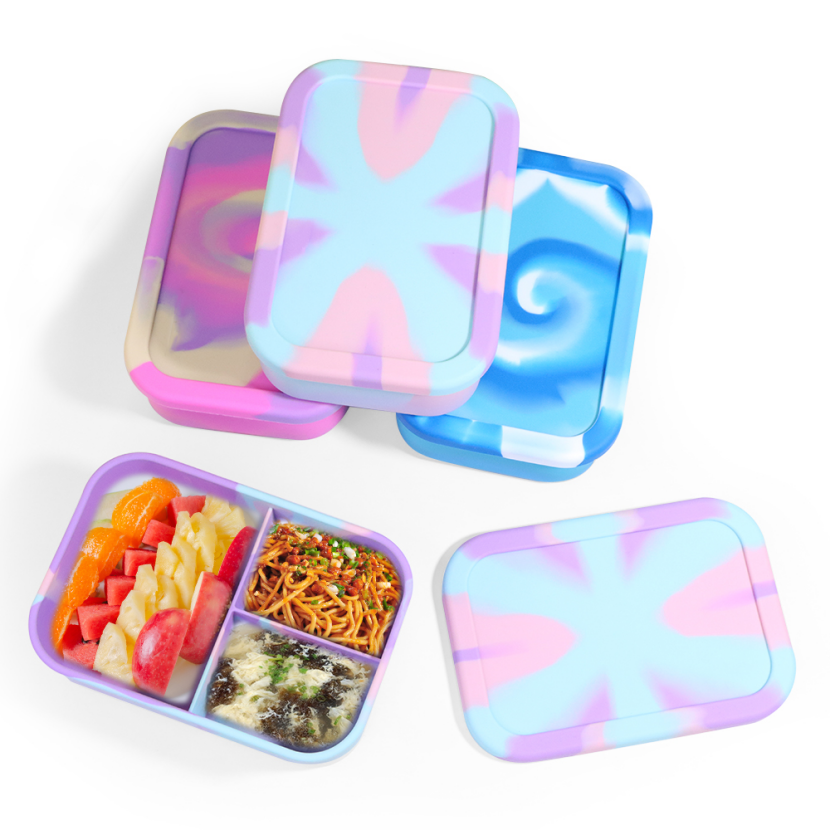

2. wygodny w podróży
Szczelność i lekkość silikonowego pudełka bento sprawiają, że idealnie nadaje się ono na szkolne obiady, pikniki, wycieczki samochodowe lub przekąski do przedszkola. Zawiera wskazówki, jak skutecznie pakować i przenosić pudełka bento, zapewniając, że jedzenie pozostanie świeże i kuszące nawet po wielu godzinach spędzonych poza lodówką.
Silikonowe pudełka bento to nie tylko pojemniki na lunch, ale także narzędzia do inspirowania kreatywności, kultywowania zdrowych nawyków żywieniowych i ekologicznego stylu życia. Ciesz się więc zabawą i funkcjonalnością silikonowych pojemników bento i obserwuj, jak czas jedzenia staje się radosną podróżą edukacyjną dzieloną przez całą rodzinę!

